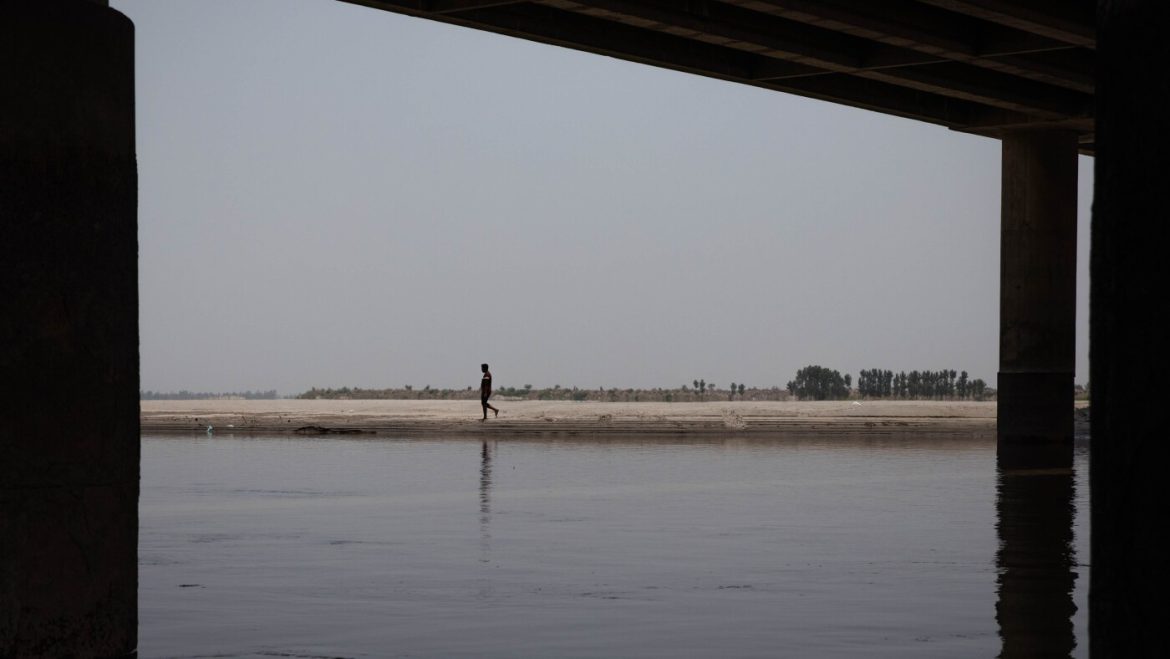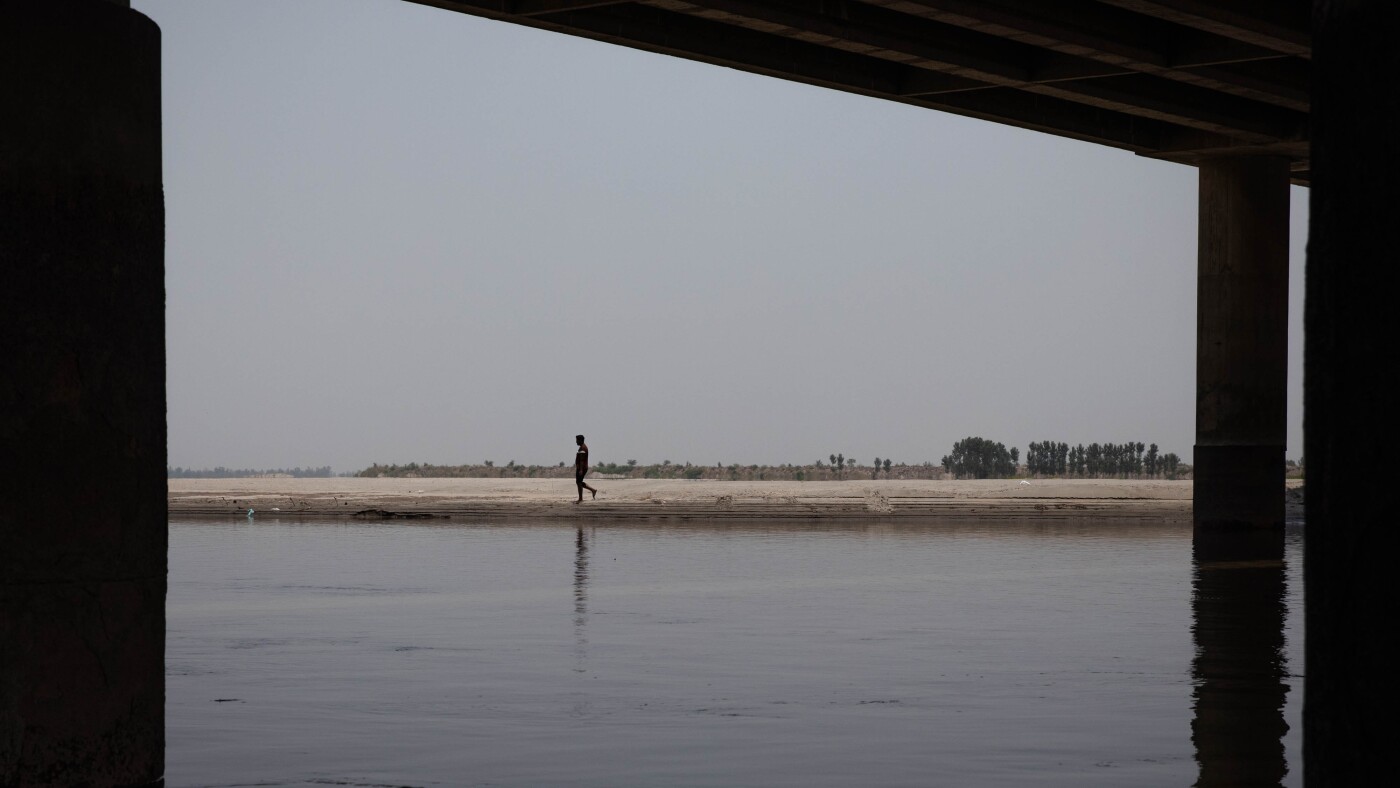The Indus River, a lifeline snaking through the heart of Pakistan, is more than just a geographical feature; it’s a symbol of national identity and a critical source of sustenance. Fed by the vast Indus Basin, it nourishes the nation’s agriculture, supports its industries, and quenches the thirst of its burgeoning population. However, Pakistan now stands at a precipice. With a rapidly growing population, inefficient agricultural practices, and the looming threat of climate change, the country is facing a severe water crisis. Adding fuel to the fire, the Indus Waters Treaty (IWT), a six-decade-old agreement that has so far governed water sharing between India and Pakistan, is now under increasing strain, exacerbating existing vulnerabilities and casting a long shadow over Pakistan’s future.
The Indus Waters Treaty: A Fragile Agreement
Signed in 1960, the Indus Waters Treaty, brokered by the World Bank, was a landmark achievement in transboundary water management. It divided the Indus River system, allocating the three eastern rivers (Ravi, Beas, and Sutlej) to India and the three western rivers (Indus, Jhelum, and Chenab) primarily to Pakistan. The treaty allowed India to use the western rivers for limited irrigation and power generation, subject to specific design and operational restrictions.
For over six decades, the IWT has been hailed as a success story, surviving wars, political tensions, and diplomatic standoffs. It provided a framework for cooperation and dispute resolution, preventing water from becoming a direct trigger for conflict. However, recent developments have placed the treaty under unprecedented pressure. India’s increasing need for water resources, coupled with accusations of violating the treaty’s spirit if not its letter, has raised serious concerns in Pakistan.
A Looming Water Crisis
Pakistan’s water woes are multifaceted. The country is rapidly approaching water scarcity, defined as having less than 1,000 cubic meters of water available per person per year. Several factors contribute to this alarming trend:
Population Growth
Pakistan’s population is exploding, placing immense pressure on already strained water resources. The demand for water for domestic use, agriculture, and industry is rising exponentially. According to the Pakistan Council of Research in Water Resources (PCRWR), the country’s water availability per capita has dropped from 5,600 cubic meters in 1951 to around 1,000 cubic meters in 2023. This rapid decline underscores the urgency of addressing population growth and its impact on water resources.
Inefficient Agriculture
Agriculture is the largest consumer of water in Pakistan, accounting for over 90% of the country’s water usage. Inefficient irrigation techniques, such as flood irrigation, lead to significant water wastage. Subsidized electricity for agriculture further incentivizes over-extraction of groundwater, leading to aquifer depletion. The PCRWR estimates that Pakistan loses about 40% of its water due to inefficient irrigation practices. Addressing this issue requires a shift towards modern irrigation techniques like drip and sprinkler systems, which can significantly reduce water wastage.
Climate Change
Climate change is exacerbating Pakistan’s water challenges. Changing precipitation patterns, including erratic monsoon seasons and reduced snowfall in the Himalayas, are impacting river flows. Glacial melt, a crucial source of water for the Indus River, is accelerating, posing a long-term threat to water availability. A report by the International Centre for Integrated Mountain Development (ICIMOD) predicts that the Himalayan glaciers could lose up to 80% of their volume by 2100, which would have severe implications for the Indus River’s flow. This underscores the need for climate-resilient water management strategies.
Poor Water Management
Inadequate infrastructure, including outdated canals and distribution systems, results in significant water losses. Lack of proper water pricing mechanisms and weak regulatory enforcement further contribute to inefficient water use. The World Bank estimates that Pakistan loses about 30% of its water due to leaky and inefficient distribution systems. Investing in modern water infrastructure and implementing effective water pricing policies are crucial steps towards improving water management.
Urbanization and Industrialization
Rapid urbanization and industrial growth are increasing water demand in urban centers. Untreated industrial effluent pollutes water sources, further reducing the availability of clean water. The Pakistan Environmental Protection Agency (EPA) reports that industrial pollution contributes to about 20% of water pollution in the country. Implementing strict environmental regulations and promoting industrial wastewater treatment are essential to mitigate this issue.
The Treaty in the Balance: Points of Contention
Several disputes have emerged regarding India’s utilization of the Indus River system, raising concerns in Pakistan about potential violations of the IWT:
Hydroelectric Projects
India’s construction of hydroelectric projects on the western rivers, particularly the Kishanganga and Ratle projects, has been a major point of contention. Pakistan argues that the design of these projects violates the IWT, potentially affecting the flow of water into Pakistan. The Kishanganga project, for instance, has been a subject of dispute since its inception. Pakistan has raised concerns that the project’s design could reduce the flow of the Neelum River, which is a tributary of the Jhelum River. The World Bank has been involved in mediating these disputes, but the underlying tensions remain.
Operational Control
Pakistan has expressed concerns about India’s operational control over the barrages and reservoirs on the western rivers. The ability to regulate water flow, even within the treaty’s provisions, gives India significant leverage. For example, India’s control over the Baglihar Dam on the Chenab River has raised concerns in Pakistan about potential water shortages during critical periods. The IWT allows India to use the western rivers for power generation, but the operational details have been a source of contention.
Suspension Threats
India has, on occasion, threatened to unilaterally abrogate or suspend the IWT, particularly in the aftermath of cross-border tensions. While such threats have not been acted upon, they have fueled anxieties in Pakistan and undermined confidence in the treaty’s durability. In 2016, following a terrorist attack in Uri, India threatened to review the IWT, which sparked a diplomatic row. Such threats highlight the fragility of the treaty and the need for stronger diplomatic engagement to ensure its longevity.
India’s Stance
India maintains that its projects comply with the IWT and that it is committed to upholding the treaty’s provisions. However, it also argues that it has the right to utilize the western rivers to their full potential within the framework of the treaty. This perspective underscores the need for a balanced approach that respects the rights and concerns of both countries. The IWT provides a mechanism for dispute resolution, but its effectiveness depends on the willingness of both parties to engage in good faith.
Pakistan’s Options and Challenges
Faced with a looming water crisis and an uncertain future for the IWT, Pakistan must adopt a multi-pronged approach to safeguard its water security:
Improving Water Management
Investing in water infrastructure, promoting efficient irrigation techniques, implementing water pricing reforms, and strengthening regulatory enforcement are crucial steps. The Pakistan Water and Power Development Authority (WAPDA) has initiated several projects to improve water storage and distribution, but more needs to be done. For instance, the Diamer-Bhasha Dam project, once completed, could significantly enhance Pakistan’s water storage capacity.
Addressing Population Growth
Implementing policies to promote family planning and control population growth is essential. The PCRWR has emphasized the need for integrated water resources management (IWRM) to address the growing demand for water. This includes promoting water-saving technologies and practices at the household and industrial levels.
Climate Change Adaptation
Investing in climate-resilient agriculture, improving water storage capacity, and promoting rainwater harvesting are critical. The Pakistan Meteorological Department (PMD) has been working on improving weather forecasting and early warning systems to help farmers adapt to changing climate patterns. Additionally, promoting drought-resistant crops and climate-smart farming practices can help mitigate the impact of climate change on agriculture.
Diplomatic Engagement
Strengthening dialogue with India, seeking international support, and exploring alternative dispute resolution mechanisms are essential. The IWT has a provision for arbitration in case of disputes, and both countries should utilize this mechanism to resolve their differences. Engaging with international organizations like the World Bank and the United Nations can also provide technical and financial assistance for water management projects.
The Path Forward: Cooperation or Conflict?
The future of the Indus Waters Treaty and Pakistan’s water security hinges on the choices made by both India and Pakistan. A cooperative approach, based on mutual respect, transparency, and a commitment to upholding the principles of the IWT, is essential to prevent water from becoming a source of conflict. However, if mistrust and unilateral actions continue to dominate the relationship, the IWT could unravel, leading to increased tensions and potentially exacerbating the water crisis in Pakistan.
A Future Hanging in the Balance
Pakistan’s water crisis is not just an environmental challenge; it’s a threat to the nation’s economic stability, social fabric, and national security. The Indus River, the lifeblood of the nation, is under increasing strain. The choices made today will determine whether Pakistan can navigate this crisis and secure a sustainable future for its people. The time for action is now, before the troubled waters engulf the nation.


